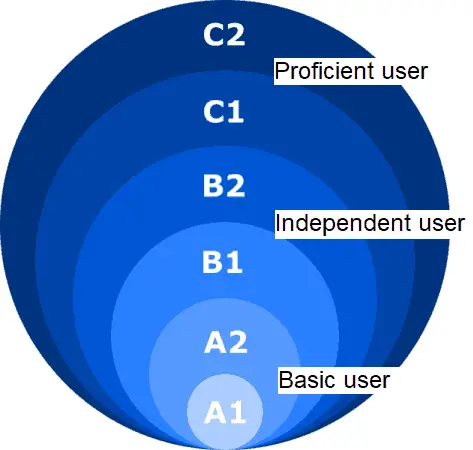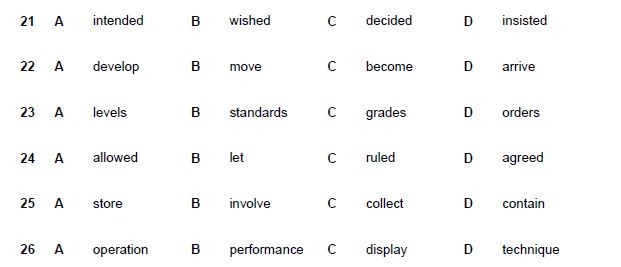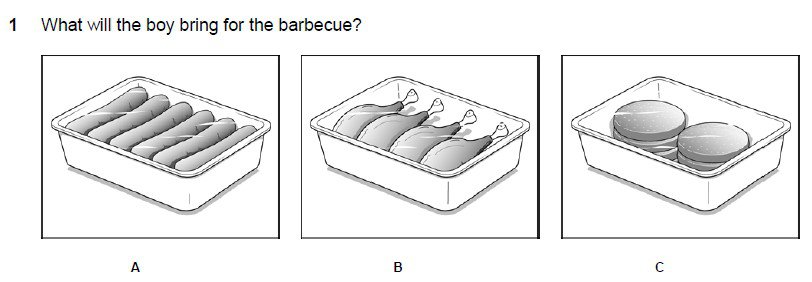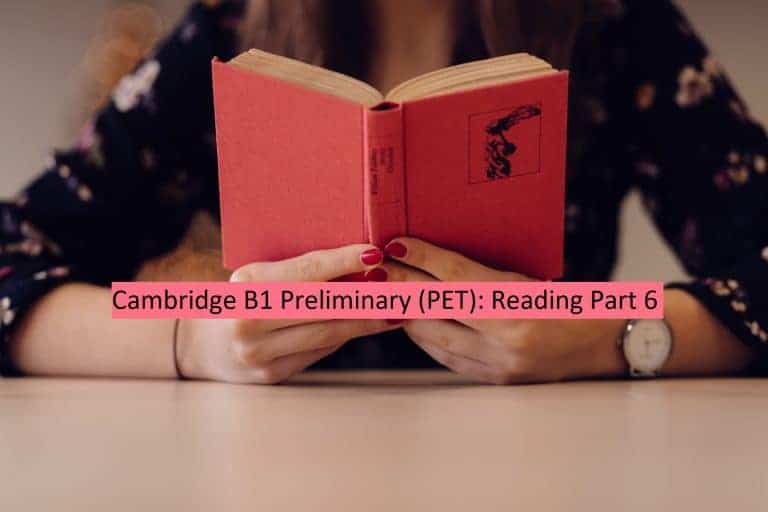Cambridge B1 Preliminary, or PET, is a popular exam to check your English level. Cambridge English is the organisation which designs it and people in many different countries in the world take the test every year.

Source: Google Trends
It is a great option to start your journey of learning English and in this article I’m going to show you everything you need to know about PET and answer these questions for you:
- What does B1 mean?
- Why is PET a good exam for you?
- What does the exam look like?
- What are the different PET exams?
- Where can you prepare for PET?
If you are interested in some or all of these questions, just continue reading and you will find a lot of useful information.
What does B1 mean?
B1 is an English level on the CEFR scale, which is a set of norms that describe different levels of English. There are six different levels and B1 is right in the middle with A1 as the lowest level and C2 as the highest.

If your level is B1 you can do the following things with your reading, listening, speaking and writing:
- You can understand the main idea of reading and listening texts about regular topics like work, school, hobbies, etc.
- You can travel to an English-speaking country and be OK in most situations, for example at a hotel, a restaurant, buying tickets, asking for directions, etc.
- You can produce simple texts in writing which talk about regular topics such as work, school, your free time, etc.
- You can describe experiences in your past and plans in the future, and you can give your opinion on different topics with reasons and examples.
All of this means that if you pass the PET exam, it shows that you can do all the things that are on the list above and that your different skills are at a specific level. Do you think you can do all of this or do you need a little bit more practice? 🙂
Why is PET a good exam for you?
PET is an exam that can help you in different ways. For me, there are four big reasons why Cambridge B1 Preliminary can be the right choice for you:
1. Develop your communication skills in English
Studying for any exam can help you develop you language skills and not only prepare you for the test. Cambridge PET is the first level where you really improve your ability to communicate in English.
You might need to use English in a lot of different situation and studying for the exam can support you and prepare you for these situations.
2. Get a good qualification
More and more jobs ask you to use English. You have to be able to write emails or even sometimes speak to people directly in English. The PET exam shows your boss that you can communicate in many situations and that your level is good enough to deal with a lot of different tasks in English. If that sounds like something you may need in the future, then PET is a good idea for you.
3. Travel more easily
In almost every country in the world people can understand you if you speak English. It is easier and more convenient if you don’t have to use a dictionary all the time, but are able to communicate freely in different places like restaurants, hotels, train stations or tourist attractions.
In addition, it is a lot easier to meet new people if you can talk to them in English. Different countries will feel like home much faster and you can make a lot of new friends in a shorter time.
4. You understand how Cambridge English exams work
With the updates to the PET exam in 2020 it has become more similar to the higher-level exams FCE and CAE. Some of the tasks are now almost the same so you understand the different tests faster than someone who starts with Cambridge B2 First or C1 Advanced.
Take the opportunity and get an advantage over other people who are not as well prepared as you are.
What does the PET exam look like?
Cambridge B1 Preliminary has four parts: Reading, Writing, Listening and Speaking. Some of the tasks also test your level of grammar and vocabulary. This means that the test is about all the major language skills and it gives you a good idea of what your English level is.
Reading
From 2020 Reading and Writing are not one paper any more, but they are different parts of the exam.
The Reading paper has six different tasks and each one of them tests something different about your reading, grammar and/or vocabulary skills. You have 45 minutes to complete all of the parts so you only have 6 1/2 minutes for each task. This is not a lot of time and a lot of students have problems with their time management. The Reading paper counts 25% of your total PET mark.
Part 1
You read five short messages or notices which are in different contexts. With each short text you get three possible options (A, B and C) and you have to decide which option is the same as the information in the text.

Part 2
You have to match five description of different people to eight different texts about the same topic. Here, you have to be careful because there are three extra texts which you don’t need to use. You have to understand details in the descriptions and texts so you can match them.


Part 3
You have to read a longer text and answer four questions. Each questions has four possible answers (A, B, C or D).


Part 4
In this part you read a longer text with five gaps. There are also eight sentences (A-H) and you have to put one of these eight sentences in each gap. Like in Part 2, there are extra sentences which you don’t need to use so be careful.


Part 5
You read a shorter text with six gaps. For each gap you get four possible words (A-D) and you choose the correct word.


Part 6
Like in Part 5, you read a shorter text with six gaps, but here you don’t get options so you have to put one word in each gap.

Writing
The Writing paper is not easy because you have to write quite a lot in a pretty short time. There are two parts and you only get 45 minutes to complete both of them so you have only a little bit more than 20 minutes for each text.
The first task is always an email and in the second one you can choose if you want to write an article or a story.
Each writing task has about 100 words so you have to write a total of 200 words. This is not a lot (more or less one page), but there are specific rules for the different types of text. An email looks different than, for example, a story, and you have to use different language as well so you need to be careful and study.
Even though it isn’t easy, for me, Writing is one of the best parts of the PET exam and you can get good marks because you can practise it very easily and get ready for the test.
Listening
Listening is another difficult part of Cambridge B1 Preliminary. The problem is that you have to listen for about 30 minutes without breaks. You might get very tired in the exam so it is very important to practise a lot. This way, listening becomes normal for you and you feel more relaxed in the exam.
In the PET Listening exam there are four parts. Each part is a little bit different. You have to listen to different kinds of recordings (one person talking, conversations, interviews, etc.) and complete a variety of tasks. They play every recording twice for you, which means that you get a second chance if you are not sure about one or more of your answers.
Part 1
In Part 1 you listen to seven short recordings. The recordings are not about the same topic and not connected. With each recording you get a question and three pictures. You have to choose the picture that answers the question correctly.

Part 2
Here you listen to six short dialogues. For each dialogue you get a sentence which explains the context of the dialogue and you have to answer a question with three possible answers (A, B or C).

Part 3
You get some notes or sentences which are a summary of the listening text. In each sentence some information is missing. You have to complete the gaps with words you hear in the recording.

Part 4
You listen to an interview which is longer than the other parts of the exam and you have to answer six questions with three possible answers (A, B or C) for each question.

Speaking
Speaking and Writing are perhaps the two best parts of the PET exam. It always works the same way so you can prepare and practise easily. This way, you will feel relaxed and confident when you take the test.
You do the Speaking exam in pairs (or in a group of three if there are too many students) and it takes around 10-12 minutes. In some parts of the test you speak alone or with the examiner and in other parts you talk to the other student (or your group). There are two examiners in the room with you – one is called the interlocuter (the person who asks the questions) and the other one takes a lot of notes and helps the first examiner.
Part 1
The interlocuter asks you a few questions about yourself. The topics could be about things you like or dislike, your daily routine, personal details, etc. You speak with the interlocuter and not with your partner. Part 1 is like a warm up in sports. The examiner wants to make you feel comfortable and relaxed.
Part 2
In this part you have to describe one photograph. The photograph can show people in many different situations. You describe the people, what they are doing and the situation. You have to talk for 1 minute on your own and the interlocuter will tell you when you can stop.
Part 3
You have to discuss a topic with your partner(s). The interlocuter explains the situation to you and gives you a few pictures to help you. You have to make suggestions and recommendation, give your opinion, agree or disagree with your partner(s) and discuss alternatives. After 2 minutes the examiner stops you.

Part 4
The interlocuter asks questions that are related to the topic in Part 3. You have to give your opinion and react to the things your partner says. The examiner might ask the students in turn or you might have to discuss a question with the other student(s).
There are a lot of example videos online where you can see how the Speaking exam in PET works. Here is one for you:
The different PET exams
There are two more PET exams which are very similar to B1 Preliminary, but there are some differences. This can be very important for you depending on your circumstances.
B1 Preliminary for Schools
This version of the exam is very similar to the “regular” PET exam, but the topics of the different tasks are more interesting for school children and teenagers. You can find more information about B1 Preliminary for Schools here.
B1 Preliminary (computer-based)
If you want, you can take the PET exam in a version for computers. The exams are exactly the same, but, of course, one is on paper and the other one on a computer. You can watch this video in which Cambridge English explain how it works.
Where can I prepare for PET?
There are test centres everywhere in the world. You can go there and book a date for the official exam and also take classes to get ready. Very often you can see this logo in the window which tells you that the school is an official Cambridge English Test Centre:

These schools normally offer good-quality classes to prepare you for the exam, but please try different ones until you find a school that is perfect for you.
On the website of Cambridge English you can look for a centre near you. Click here to get to the website.
Summary
I hope all the information in this article has helped you understand the PET exam a little bit better. If you want to take the exam in the future, start preparing early so you are ready when you need to be. Good luck!
Lots of love,
Teacher Phill 🙂








One Comment
Comments are closed.